
Posts Tagged: taste
All Systems 'Go' for the International Olfaction/Taste Symposium
All systems are "go" for a first-of-its-kind international olfaction/taste symposium co-hosted by a trio of scientists, including UC Davis distinguished professor Walter Leal. The Zoom symposium, “Insect Olfaction and Taste in 24 Hours Around the Globe,” begins at 9 a.m.,...
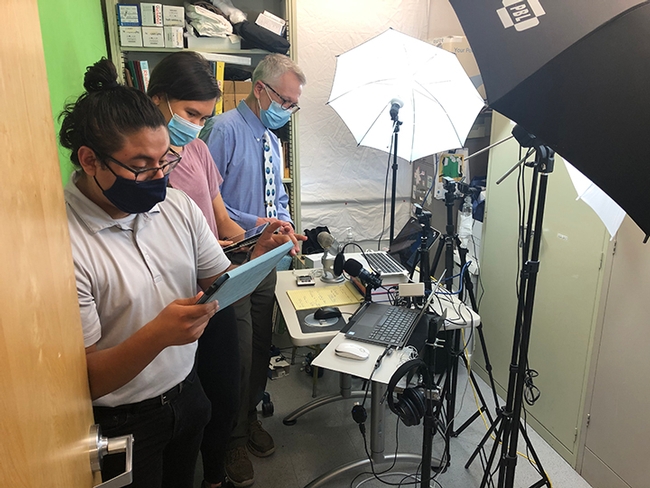
UC Davis distinguished professor Walter Leal (far right) preparing for the chat session of the international symposium on olfaction and taste. Assisting him are students Efrain Vasquez (foreground) and Kelly Brandt.
Olfaction and Taste Symposium: Learn About Honey Bees, Mosquitoes, Butterflies, Fruit Flies and More...
Honey bees, mosquitoes, cabbage butterflies, fruit flies and more... You'll hear about a variety of insects when the international symposium, “Insect Olfaction and Taste in 24 Hours Around the Globe,” takes place beginning at 9 a.m., Pacific Daylight Time (PDT), Wednesday, Aug....
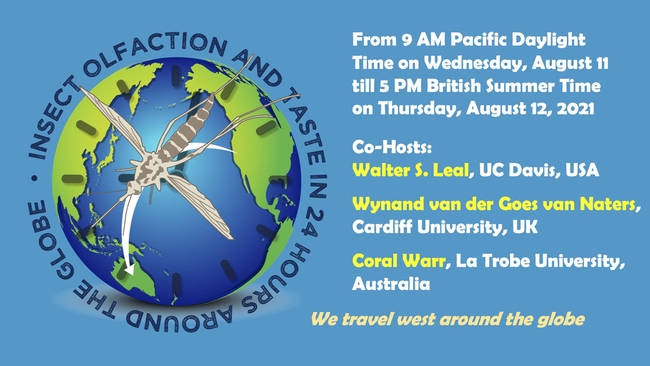
The free international symposium, “Insect Olfaction and Taste in 24 Hours Around the Globe,” begins at 9 a.m, Pacific Daylight Time (PDT), Wednesday, Aug. 11.
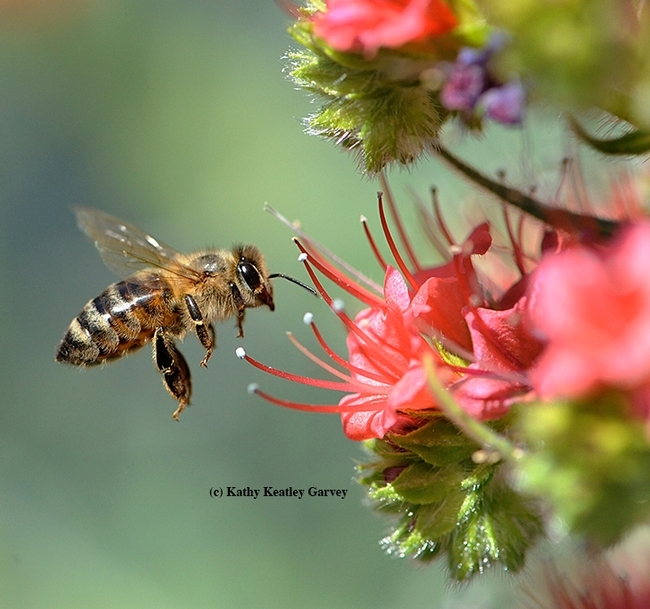
The honey bee will be one of the insects featured at the international symposium, “Insect Olfaction and Taste in 24 Hours Around the Globe,” (Photo by Kathy Keatley Garvey)
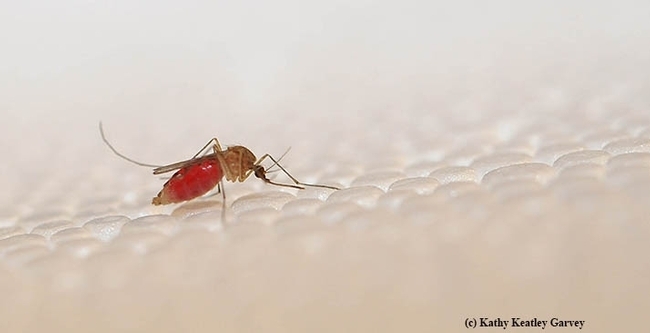
The symposium will zero in on olfaction/taste research on three species of mosquitoes, including Culex. This is Culex quinquefasciatus. (Photo by Kathy Keatley Garvey)
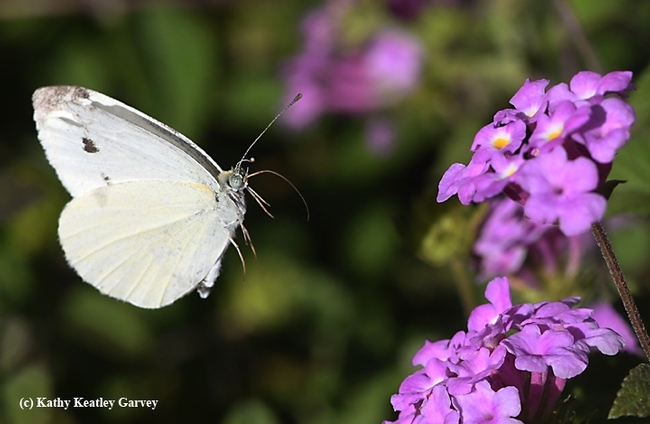
The cabbage butterfly, Pieris rapae, will share the spotlight at the international symposium, “Insect Olfaction and Taste in 24 Hours Around the Globe." (Photo by Kathy Keatley Garvey)
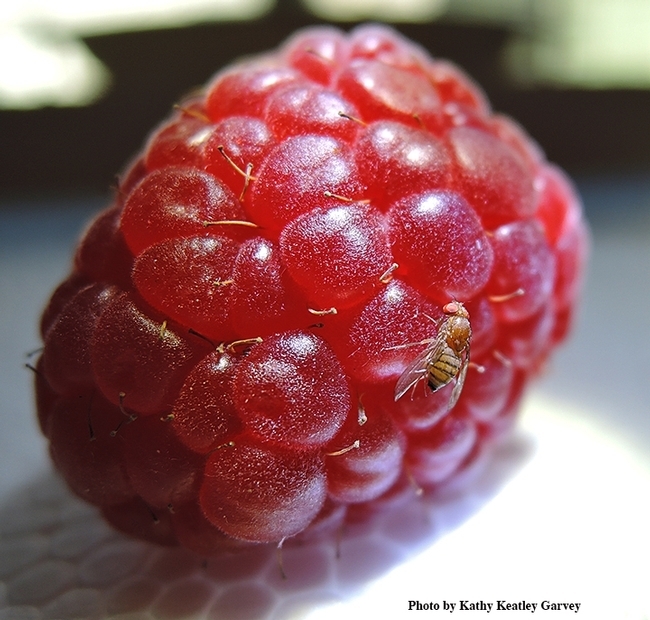
Drosophila suzukii, the spotted-wing drosophila, is a pest of raspberries and other fruit. The insect will be discussed at the symposium on "Insect Olfaction and Taste in 24 Hours Around the Globe." (Photo by Kathy Keatley Garvey)
Do Honey Bees Have Taste Buds?
You've seen honey bees nectaring on flowers. You've watched their proboscis (tongue) probing for nectar. Some linger quite awhile before they buzz off. Have you ever thought about this: Do they have taste buds? A colleague asked that question. In fact, it was his friend's nine-year-old son who...
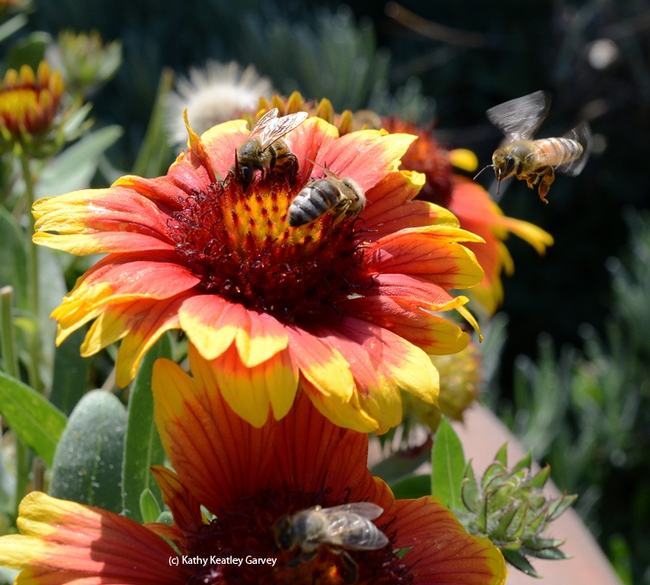
Honey bees sipping nectar from a blanketflower (Gaillardia), while another bee buzzes in. (Photo by Kathy Keatley Garvey)
A Feast Fit for a King and Queen (Bee)
You like the taste of honey, right? How about “A Taste of Mead and Honey?” That’s even better! The UC Davis Honey and Pollination Center is planning a "Mid-Winter Beekeepers Feast: A Taste of Mead and Honey" on Saturday, Feb. 8 in the foyer of the Sensory Building, Robert...

When February arrives, honey bees will be out pollinating the almonds. (Photo by Kathy Keatley Garvey)
Is there a potato in my coffee?
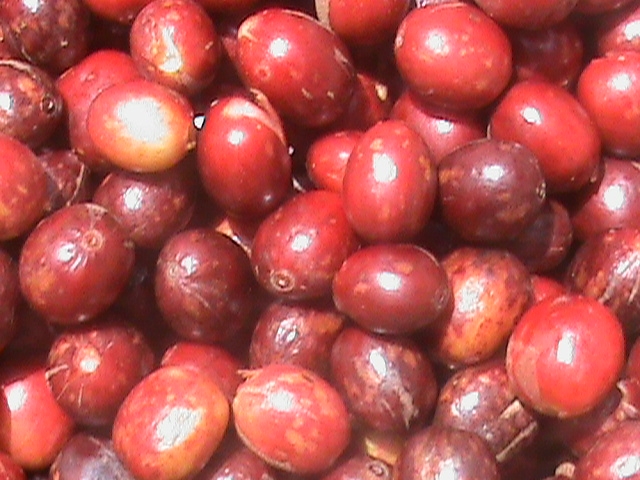
So pernicious is PTD that its occurrence can downgrade the value of the entire crop by a fourth or a third. Worse yet, PTD is only apparent after processing, roasting, grinding and brewing, and can occur long after the coffee has been shipped abroad.
Thought to be caused by chemicals produced by microbes that gain access to the coffee cherries by way of a stink bug called antestia, PTD has gained the attention of an international effort, called the potato taste project, that for two years has sought the cause and cure for the defect
Two undergraduate students at the University of California, Riverside, have played key roles in the potato taste project.
“Lauren Wong and Tony Truong made a key breakthrough discovery that led to our asking one of UC Riverside’s plant pathologists, James Borneman, to do a microbiome of coffee beans in Rwanda,” says Thomas Miller, a professor of entomology at UCR and one of the members of the international team working to mitigate the potential impact of the defect on Rwanda’s specialty coffee industry.

“We juxtaposed beans that had passed the stringent criteria against numerous batches of beans that had potato taste defect,” says Wong, who graduated in spring 2013 with a bachelor’s degree in biological sciences and is currently working in Miller’s lab. “When we roasted the beans, we found that all the potato taste defect microbes were killed.”
Truong examined whether the potato taste defect microbes can be manipulated to affect coffee taste.
“My experiment is a stepping stone to finding a solution for potato taste defect,” says Truong, who will graduate with a bachelor’s degree in biochemistry in 2015. “Are bacterial/fungal infections the source of the problem? Can the affected coffee beans be treated to remove the effects of potato taste defect? These are some of the questions I am exploring.”

Then, Miller stayed in Rwanda for two weeks that comprised meetings, workshops and numerous field trips. He has been in nearly daily email contact with Rwanda since.
“That visit helped us all get a better understanding of potato taste and its causes,” he says. “We gathered coffee bean samples for analysis in the United States and began collaborating with Rwandan scientists. We also assisted Rwanda in reaching out and making contact with people willing to help solve the potato taste defect problem.”
The culmination of the first two years of the PTD project will be a coffee summit on 1-2 April 2014 at NUR. The meeting is being organized by NUR and the Global Knowledge Initiative, a Washington DC, non-profit organization dedicated to finding solutions to problems in developing countries.
More information about PTD can be found at www.coffee.ucr.edu.
